How Vancouver’s First Nations became Canada’s biggest real estate developers
Several massive projects are underway in Vancouver, which will create much-needed housing and bring Indigenous culture and heritage back to the communities.
BY Linda Baker
Over the past two years, the largest Indigenous-led housing project in Canadian history has started to take shape on a 10.5-acre site near downtown Vancouver B.C. Spearheaded by the Squamish Nation, the Sen?á?w village features 6,000 rental units spread across 11 residential towers, as well as parks, commercial space, and an energy system that will utilize waste to heat and cool the entire neighborhood.
Slated for completion in 2030, Sen?á?w is expected to generate up to $13 billion for the Nation, whose ancestors occupied a fishing and trading village on this site for centuries until 1913, when they were forcibly removed by colonial settlers, their homes burned to the ground.
In addition to financing housing, jobs, and services for the Nation, Sen?á?w will bring back Squamish culture and heritage as a visible and prominent part of the fabric of Vancouver, said Wilson Williams, a Squamish Nation councilor.
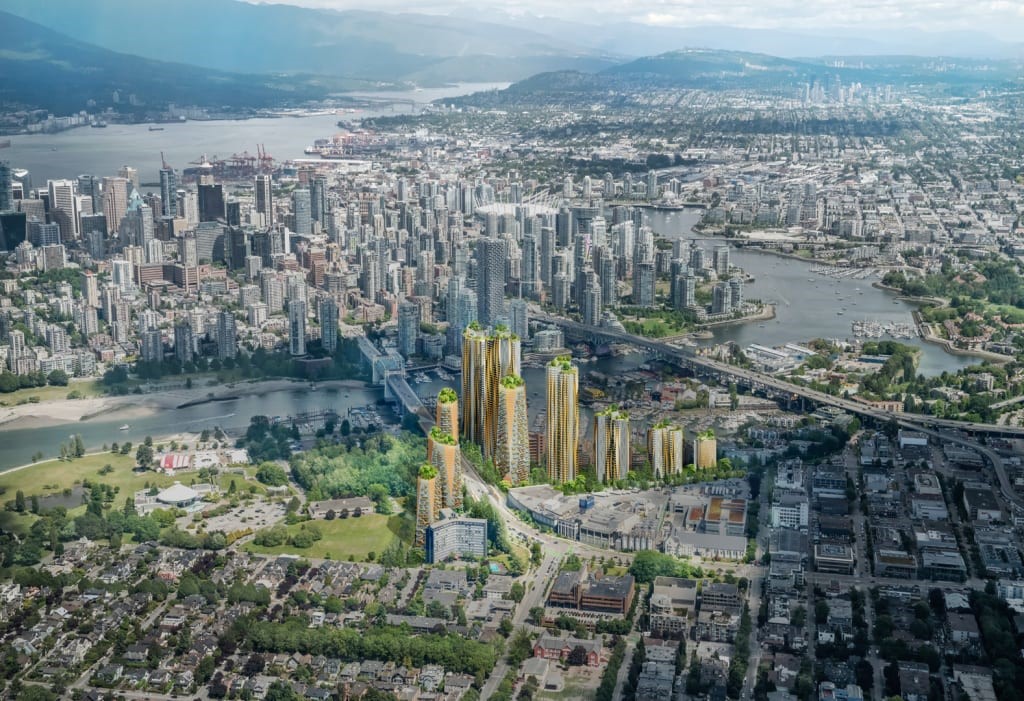
“We have been out of sight and out of mind in our own village for 100 years,” he said. “Now we have a generational plan to bring everyone home.” About half of the 4,100 members of the Squamish Nation currently live in reserve communities in Vancouver and the city of Squamish B.C.
A milestone for the Squamish, Sen?á?w isn’t the only Indigenous-led mega development planned for Vancouver, home to Canada’s third-largest urban Indigenous population, with 52,375 people. Notably, the MST Development Corporation, a joint venture between the Musqueam, Squamish, and Tsleil-Waututh Nations, oversees six properties across 160 acres of developable lands, valued at more than $2 billion.
Planned neighborhoods include the 90-acre Jericho Lands redevelopment featuring 13,000 homes, retail, restaurants, and office and industrial space. The 12-tower Heather Lands neighborhood will include 2,600 housing units, a daycare, parks, and commercial space.
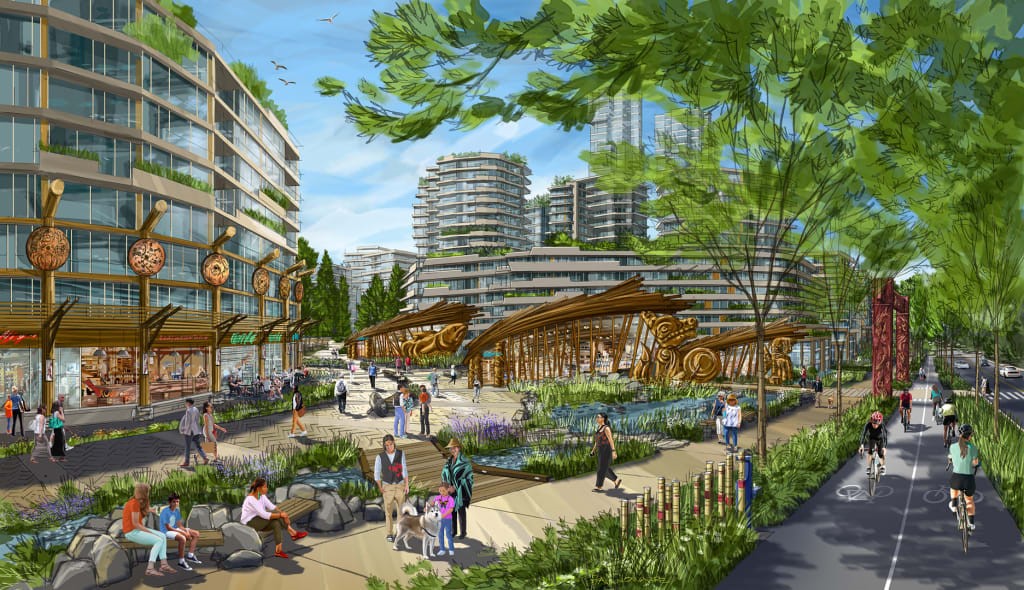
With all of these projects, Vancouver’s First Nations now rank as Canada’s biggest developers, and their initiatives are reshaping the built environment and real estate dynamics in one of the highest demand markets in North America.
“It’s definitely poetic justice,” said Ginger Gosnell-Myers, a fellow at Simon Fraser University’s Morris J. Wosk Center for Dialogue, where she focuses on Indigenous urban planning, design, and policy. The large-scale developments, she noted, are helping address some of Vancouver’s most pressing challenges, including a rental shortage and housing affordability crisis and climate change mitigation. They also provide a welcome relief from the homogeneity of recent development.
“As cities speed toward gentrification, they are starting to look the same,” said Gosnell-Myers, who previously worked as the city’s first Indigenous Relations Manager.
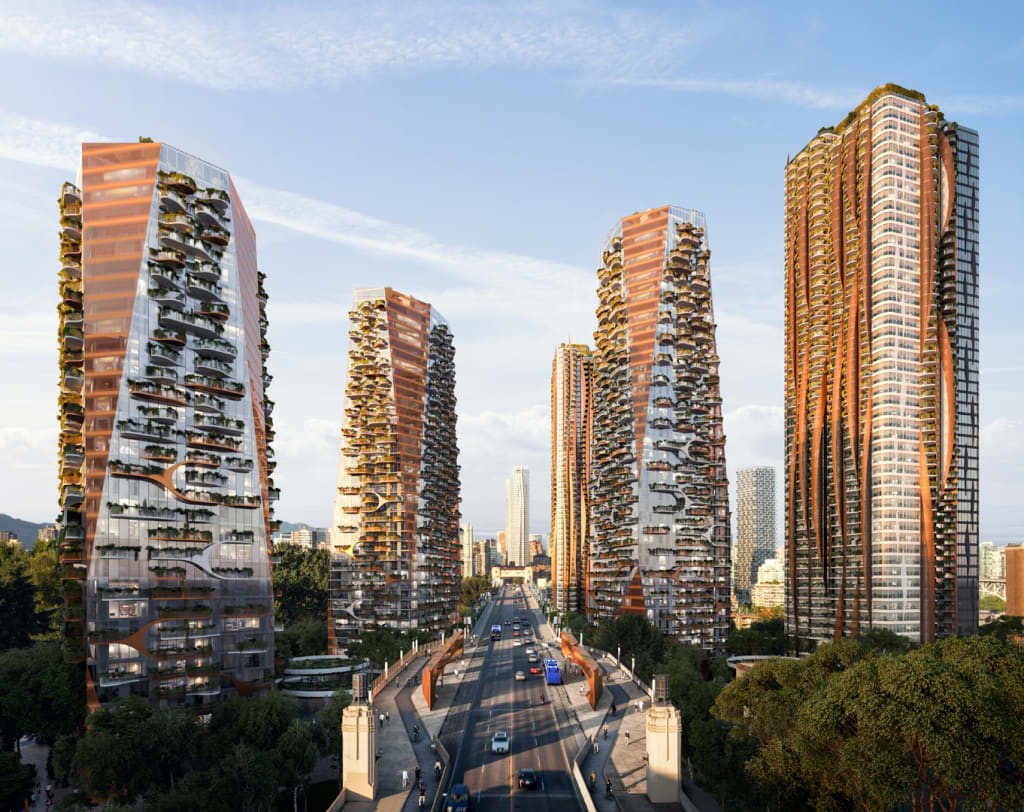
Indigenous city building
Located on prime urban waterfront property, Sen?á?w provides a vivid example of how First Nations are leveraging land development to create long-term financial stability while also building housing and slashing carbon emissions.
The project’s modern history dates back to 2003, when, following years of court battles, the Nation regained the title to the 10.5-acre parcel, a portion of the 80-acre reserve that European settlers had allocated for the Squamish in the late 1800s.
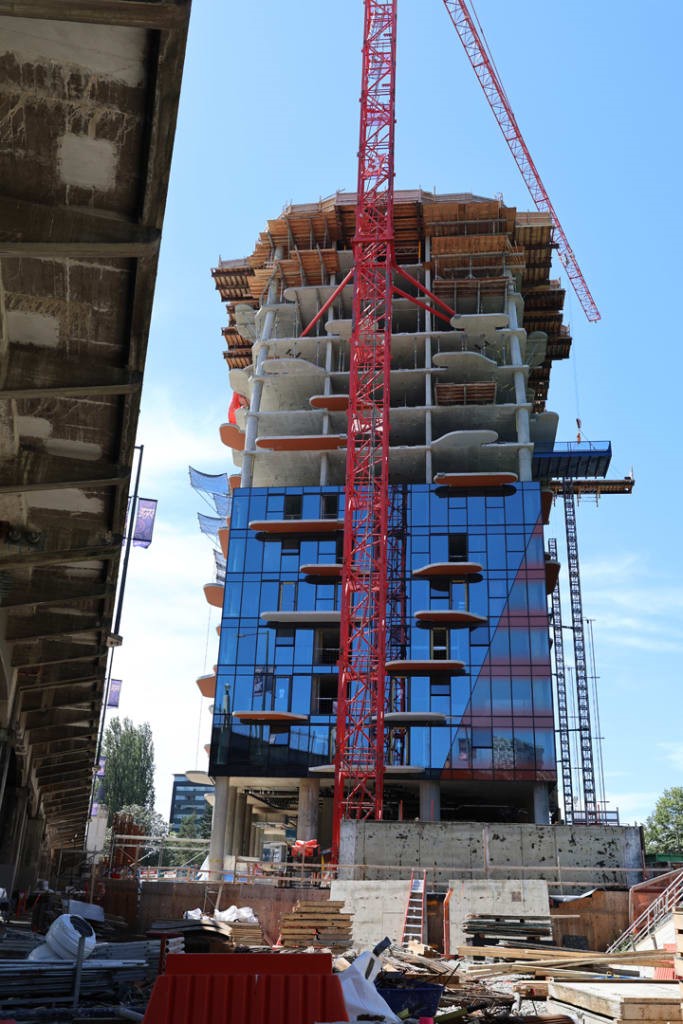
Crucially, because Sen?á?w is located on a First Nation reserve, it’s exempt from Vancouver’s zoning rules and approval process. This has allowed the Squamish, in partnership with private developer Westbank, to build one of the tallest, densest developments in the city, with thousands of mostly rental units filling towers that range from 17 to 59 stories high.
“Sen?á?w is market-informed, and that includes the density necessary to build housing in Vancouver,” said Mindy Wight, CEO of Nch’?ay? Development Corporation, the economic development arm of the Squamish Nation. But telling the story of the Squamish through its land and integrating that history is important for how the Nation approaches development, she emphasized.
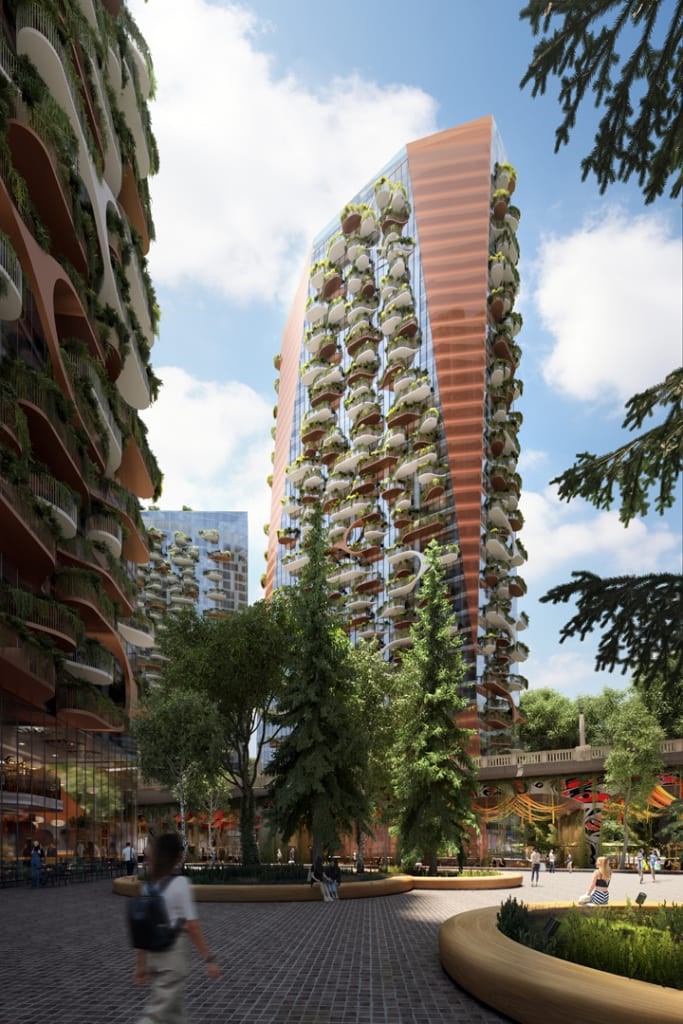
“You see that in the embedding of cultural elements in the design and you see that in the integration of the Nation’s views of sustainability and land management.”
Diverging from Vancouver’s signature architectural style—slender high rises resting on massive podiums—Sen?á?w’s residential towers are designed to look like mountains and longhouses, the latter featuring exterior copper “fins” evocative of salmon. Traditional art will figure prominently throughout the development, and will be integrated into the décor, wallpaper, signage, interior displays, as well as in the landscaping and public spaces.
The 6,000 housing units will provide urgently needed rentals in Vancouver, now facing some of the highest rents and lowest vacancy rates in Canada, said Matt Shillito, the city of Vanouver’s interim planning director. Twenty percent (1,200) of Sen?á?w’s units will be below market rate; of those, 250 will be reserved for Squamish.
The First Nation is also “leading the way” in pushing down parking ratios required for new developments, Shillito said. The project features a new transit hub, and only about 10% of the residences will have parking spaces, compared to roughly 4,500 spaces for bikes, many easily accessed through an innovative underground ramp system (no elevators required).
Sen?á?w’s will use excess energy from the city’s sewer system to provide virtually emissions-free heating. The project will also incorporate 45,000 square feet of mass timber construction, generating 50% less embodied carbon than typical concrete construction. Overall, the development will be the first large-scale net zero housing development in Canada.
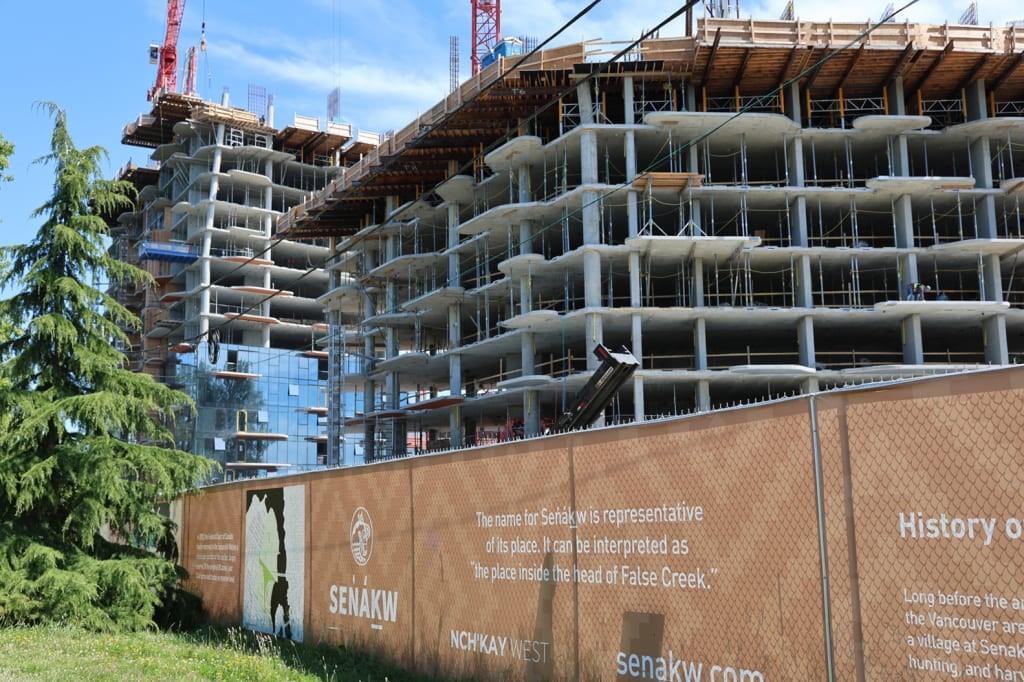
Shaking up an industry
Formed in 2018, Nch’?ay? is one of several new entities that Vancouver’s First Nations have set up to manage large-scale urban development projects. Its modus operandi is to build real estate capacity in-house while recognizing that in the interim, “we need parties that have access to capital, who have that expertise and depth and breadth to bring that to the table,” Wight said.
The partnership with Westbank, for example, enabled the Nation to secure a record $1.4 billion federal loan to help finance Sen?á?w’s first two phases. Seemingly an odd collaboration, the deal netted Westbank, a leading developer of luxury communities, a 50% share in one of the highest profile projects in the country. (On its side, Westbank has partnered with OPTrust, the Ontario Public Service Employees Union, and Government of Ontario pension fund.) Westbank and Nch’?ay? declined to share more details about the partnership or the loan.
A condition of the project and the partnership, endorsed by 87% of Nation members, is that the Squamish retain ownership of the land.
Ian Gillespie, Westbank’s chief executive, said one benefit of the partnership will be the transfer of knowledge and experience from Westbank to the Nation. “It isn’t to say the Nation should do every project on their own. But that should be a viable option.”
In addition to the income generated from rents and leases, Sen?á?w will open up jobs and entrepreneurship opportunities for Squamish members tied to various aspects of development, from the construction trades to real estate and finance.
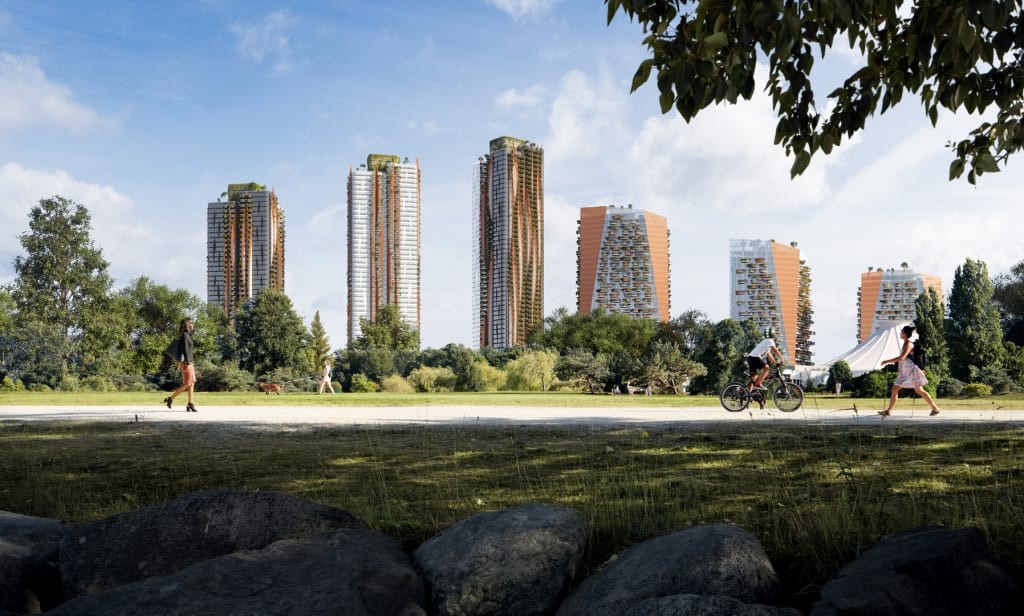
Reconciliation through real estate
Vancouver’s Indigenous megadevelopment era comes as all levels of government in Canada pursue reconciliation initiatives with First Nations, aimed at atoning for the country’s decimation of Indigenous populations and the dispossession of both land and culture.
Jericho Lands and Heather Lands are prime examples: Both projects originated in 2014, when the MST Development Corporation partnered with the Canada Lands Corporation to purchase the federally owned properties, located on ancestral territory.
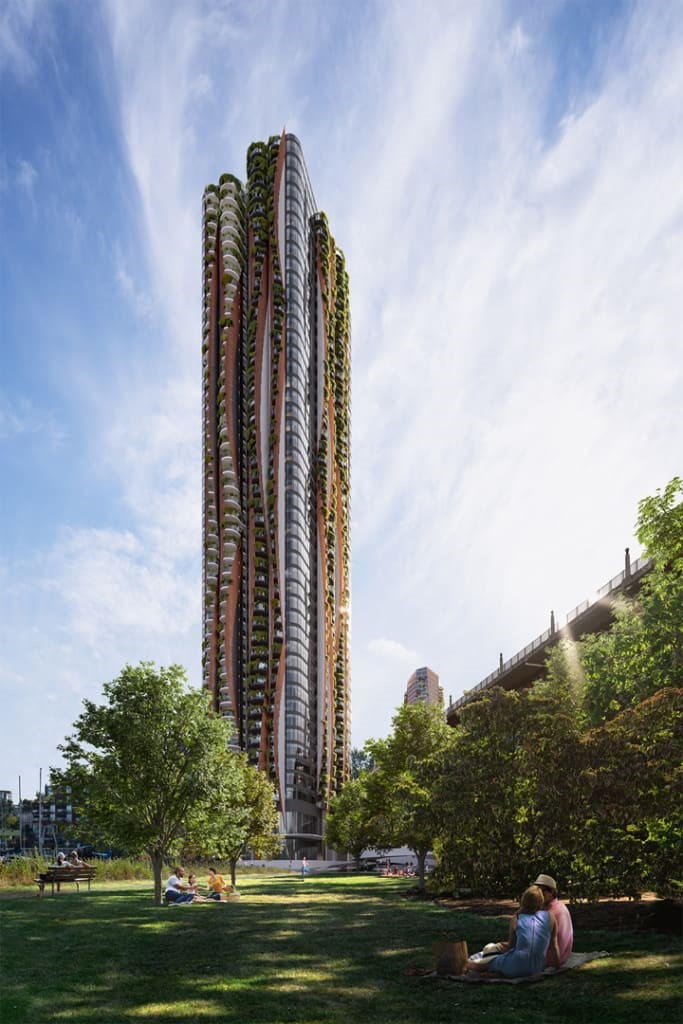
Separately, MST purchased additional Jericho Lands acreage owned by the BC Provincial government, and retained Aquilini Development as their private development partner.
The projects, to be built in phases over the next two decades, aren’t on reserves; as a result, they’re subject to Vancouver’s land use rules. But the municipality approached the approvals process with “a different, more flexible mindset,” Shillito said, giving “the First Nations a lead in how they wanted the projects to play out.”
The result is a revival of the region’s historic Coast Salish culture, made manifest in modern urban development. Heather Land’s signature building is a cultural center focused on the practice and sharing of Indigenous values and traditions. In addition to a conventional library, Jericho will feature an Indigenous House of Learning. And at 49 stories, Jericho’s three tallest buildings—called “The Sentinels—represent the MST Nations’ traditional messengers, who stood watch over land and water, “protecting us from warring peoples,” said Wendy Grant, chair of the MST Development Corporation.
Addressing city as well as MST goals, the communities will prioritize public transit, cycling, and pedestrian transportation. Roughly 30% of housing on Jericho Lands and 22% on Heather Lands will be subsidized or below market rate. In a departure from master-planned communities in Vancouver, the for-sale homes will be condos in which the First Nations retain title to the land.
Beyond these physical features, the developments are playing a critical role in restoring age-old alliances, Grant said. Before colonization, the MST Nations were part of a trading group that fell apart when settlers pushed the communities onto different reserves. As reconciliation opened up redevelopment opportunities, the three Nations revived the compact through the MST joint venture. Working together “is where our success has come from,” Grant said.
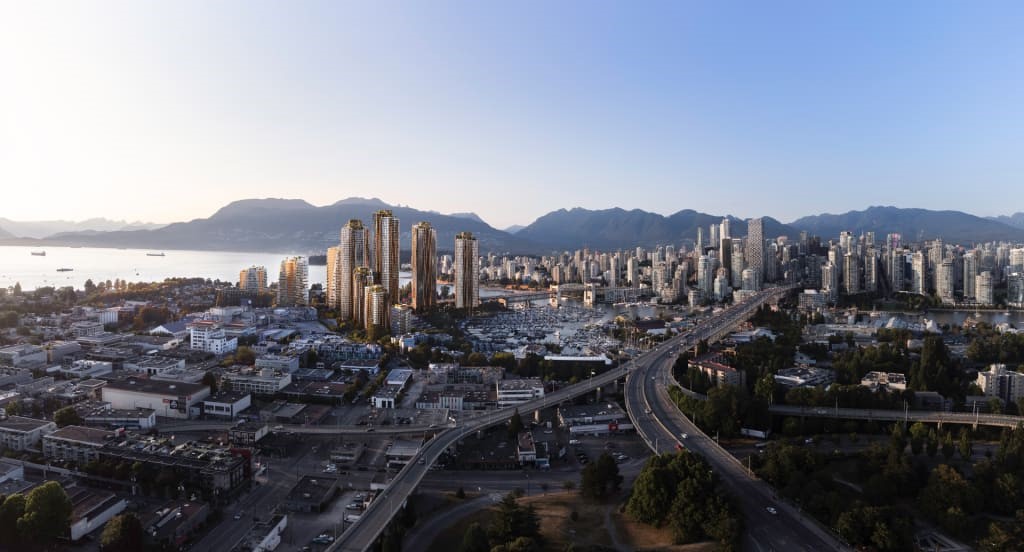
Back to the future
Not everyone is enthusiastic about the new neighborhoods. Residents of adjoining neighborhoods, which are some of the most affluent in the city, have raised objections to the projects’ massive scale and the bypassing of city regulations. Some planners and politicians—as well as some Nation members—have also expressed concerns about the projects’ environmental impact and the missed opportunity to build more affordable housing.
Criticism is par for the course with any large development. But embedded in some of the external opposition is a misguided assumption, Gosnell-Myers and other leaders said: Namely, that high-density urban building is somehow incompatible with Indigenous lifestyles. That stereotype, they say, highlights the need for continued education about the hundreds of thousands of people who populated the region before contact.
“There is this huge sense of historical amnesia—that Indigenous peoples lived in small clustered communities, kept to themselves, and liked to live in rural, remote areas. None of that has ever been true,” said Gosnell-Myers. “Historically, we lived in our own urban centers, and the majority of cities in North America were built on stolen First Nations’ land. That’s how Vancouver grew.”
The Squamish Nation will continue to bring forward new types of housing that meets the needs of their own communities and the city at large, Wilson and Wight said. Nch’?ay? is already eyeing another parcel for an elders’ village and has launched formal listening sessions with members to identify other services and facilities that can drive the next wave of development.
“The location of Vancouver within the territory of the Squamish presents a unique opportunity for us to take a lead in real estate development,” Wight said. “There is more on the horizon.”
(33)